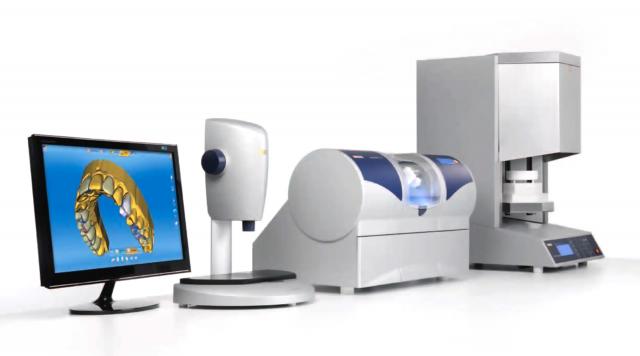06.08.2019.
CAD-CAM technology and new prosthetic materials
What is CAD-CAM and how does it improve the manufacturing and quality of dental substitutes? CAD-CAM is an abbreviation for computer-aided design and computer-aided manufacturing of artificial teeth in everyday dentistry.

The main advantages of using this technology are:
- reduction of human error and precision of manufacture
- easier therapy planning
- anatomically, functionally and aesthetically superior works
- precise installation without additional grinding and adjustments
- durability and high quality of bite without interference
- rapid manufacturing and installation in one visit to the dentist
The use of new technologies in dentistry avoids the possibility of error by laboratory technicians and maximises precision of manufacture. The manufacturing machine can be connected to a device for digital jaw scanning and allows the doctor to perfectly plan the therapeutic procedure, size and anatomical appearance of the tooth. The production of dental substitutes (crowns, bridges, ceramic fillings and veneers) is fast and perfectly precise, so no additional grinding and adjustments are required during installation, and the manufactured replacement perfectly complements the imperfections and irregularities of the tooth. Therefore, once the new tooth is implanted, the bite is correct, and aesthetically and functionally adapted to the patient, thus avoiding bite discomfort and prolonging the durability of the work done. Before, during manual tooth creation for the installation of the crown, patients had to wait several weeks and more visits to the dentist were required. The use of CAD-CAM technology has greatly accelerated this process, where tooth scanning, tooth designing and final work are done in just an hour, with often just one visit to the dentist is needed. The development of digital technologies in dentistry increase the speed of work carried out and patient safety and new materials such as glass-ceramics that better imitate the hardness, transparency, aesthetics and functionality of the tooth are being used.
The main advantages of glass-ceramics are:
- the transparency of the natural tooth which gives a superior aesthetic result
- best imitates the hardness of natural teeth
- elasticity that minimises damage to the work and other teeth during contact
- work durability
Glass-ceramic dental substitutes can be made by dental technicians in a dental laboratory; however, since it is a material of the highest aesthetic and functional value, this brings a higher cost for the client, which is why we certainly recommend clinics that use CAD-CAM technology to ensure that the final work is free of objections. With its properties, glass-ceramics, both aesthetically and functionally surpass materials such as ceramics and zirconia and best imitate natural teeth. It is recommended that to be placed in the frontal part of the jaw thanks to its high aesthetic value and is best used when manufacturing individual crowns on natural teeth and implants.
It can also be used for two-part bridges, but because of its similarity to the natural tooth, is not recommended for multiple-part bridges in order to prevent cracking (overpassing one missing tooth). If used to attach a complete prothesis to implants, at least 8 implants must be used.
The use of new technologies and materials contribute to aesthetics, functionality and durability in replacing and correcting dental irregularities and defects, accelerating the treatment processes and increasing patient satisfaction. So before choosing a dentist, pay attention to the equipment he uses and how the selected clinic follows the new trends in dentistry.